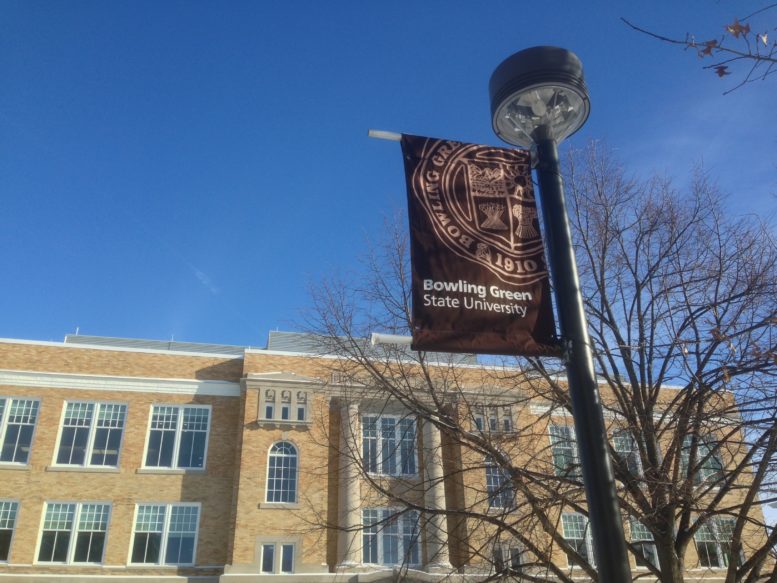COVID-19’s cases in the United States have started to rise again, despite seemingly being on track to reduce a few weeks ago.
With that, universities, public schools, and other institutions are figuring out a way to continue the school year, while still keeping students and faculty safe.
For most schools, going online-only is the answer; with students doing remote learning courses for the foreseeable future. It seemed like things were on track until the Immigration and Customs Enforcement office threw a wrench in everyone’s plans last week.
On July 6, Immigration and Customs Enforcement, or ICE, announced, “The U.S. Department of State will not issue visas to students enrolled in schools and/or programs that are fully online for the fall semester nor will U.S. Customs and Border Protection permit these students to enter the United States. Active students currently in the United States enrolled in such programs must depart the country or take other measures, such as transferring to a school with in-person instruction to remain in lawful status. If not, they may face immigration consequences including, but not limited to, the initiation of removal proceedings.”
Before that announcement, many colleges had already committed to fully-online instruction for at least fall 2020. Now, both international students and their respective colleges are scrambling to figure out what to do next. International students make up a large part of Ohio colleges and universities, more than 37,000 in the entire state. At Ohio State University alone, they make up more than 10% of the entire student body.
The language in the ICE ruling is seemingly unyielding — if your curriculum moves to an online-only format, a student has to either transfer to a new school that offers in-person instruction or return to their country of origin.
The ruling has brought anxiety for international students and their families, anxiety that has only been amplified with the rising COVID-19 infection rates.
Naman Agarwal, from India, is a sophomore at Miami University. He and his father both are concerned that if COVID-19 cases continue to spike, the state will shut down completely, in-person classes will be impossible and Agarwal may be forced to return home.
“Right now they are saying that (school) will open, but if COVID gets really bad, they won’t have any choice but to cancel school. Then what will happen to us?” said Agarwal.
His father, Devesh Gupta, has similar concerns.
“I am worried that what happens when there is an outbreak of positive cases (a very likely scenario as per present trends), Miami is shut down and classes go completely online for the remaining session. Then this ICE ruling could come in play,” he said in an email.
Even still, there are logistical issues if international students were to find themselves forced to return.
Many international students in Asia or Europe would have to cope with a huge time difference for classes. For example, a class held at 3 p.m. in Ohio, would be at 3 a.m. in China.
Jacob Chang, from China, is a political science major at Ohio State University. He also shares similar concerns as Agrwhal and Gupta; the fears that rising coronavirus numbers in the state could force schools to close entirely, thus changing their immigration status with little recourse.
“For domestic students, if Ohio State goes online, they can go back home. For international students, we’ll be homeless. Per ICE regulations, we would need to leave the country in 15 days. If we don’t leave, we would be deported and would never be able to continue our college life,” said Chang.
Because of COVID-19, a lot of countries have travel bans — some specifically for travelers coming from the United States. Many students may not even be able to buy a ticket home, as some countries are completely closed off to stop new infections.
Naman Argwhal expressed similar fears, fearing that if he is unable to return home, yet is unable to stay in the U.S., he wonders if he would end up in an ICE detention camp.
“If we have to go home, but our country is closed, where do we go? We can’t fly back, but we can’t stay here, would they put us in an ICE detention camp?” he said.
Jacob Chang, working with the International Student Council at Ohio State, also expressed concerns that returning home could end college careers for many students. In some countries, like China, internet access is heavily regulated, with many American and European websites being blocked or limited.
“The internet for some of us isn’t always stable. Imagine taking a test for a college, and then you lose your internet connection,” said Chang.
“If I’m forced to go back home for college, how would I be able to do research?” Chang continued.
With that in mind, both ICE and some Ohio schools have said that withdrawing, or taking a leave of absence from school could be an option for some international students. However, Chang explained that it would change their immigration status immediately, and once they’ve returned home, they would have to reapply for any sort of student visa.
Chang and Mr. Gupta are concerned that these potential roadblocks if realized, could end some students’ college careers.
With that said Jacob Chang and a few other international students at Ohio State have created an open letter to the provost. In the letter, they express their fears and concerns, and they ask the university to fight for them — asking Ohio State to do something similar to some colleges, creating a mandatory in-person class for international students, converting their college track to a “hybrid” format, allowing them to stay in the U.S.
Many colleges and universities in Ohio have sent out statements either condemning the ICE ruling or expressing support of their international student population. Ohio State has joined the amicus brief that Harvard and MIT have started against ICE.
There’s also concern that the potential dismissal of international students en masse, could harm Ohio’s economy. A study by NAFSA shows that for the 2018–2019 year, international students contributed more than $1.3 billion to the Ohio economy. They also supported more than 14,000 jobs, either directly or indirectly.
With Ohio’s unemployment still higher than the national average, Ohio needs all the help it can get.
***
Also from Ohio Capital Journal:
GOP State Sen. Gavarone urges support of police, opposes defunding of police
A Republican legislator wants the legislature to stand up for police budgets, while also condemning excessive force done by “the slimmest margins” of police officers around the state.
In a resolution offered recently, state Sen. Theresa Gavarone, R-Bowling Green, writes the “just and unbiased enforcement of the rule of law and the protection of the people is an essential function of government at the local, state and federal levels.”
“(The resolution is) urging support for police officers who do things the right way,” Gavarone told the Capital Journal on Monday.
The question of “defunding” law enforcement comes as protests on police brutality and racism have played out on the Ohio Statehouse grounds and elsewhere throughout the country. READ MORE
CARES Act funding to aid Ohio schools, care facilities
Nursing homes, schools and hospitals are among the places in Ohio that will soon receive an influx of cash to help bolster their response to the COVID-19 pandemic.
Hundreds of millions of dollars in federal CARES Act funding was allocated Monday by the Ohio Controlling Board, to be distributed in the coming weeks.
In the cases of schools, both for primary and higher education, this money will stem cuts made by the state government earlier this year. READ MORE





